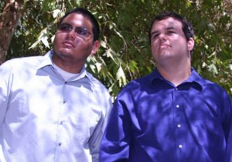Cooperative Collision Avoidance with Autonomous Vehicle Platoons
Researchers: Dylan Watson, Miguel De Jesus
Abstract: This project addresses an approach to reduce the amount of vehicular collisions using LiDAR and vehicle-to-vehicle wireless communication. Research shows that autonomous vehicles can react faster than human drivers. Other research shows that wireless vehicle communication in a non-autonomous platoon can reduce vehicular collisions with a low enough latency . Our objective is to reduce that number even further by eliminating human reaction time in an autonomous platoon. We used LiDAR (Light Detection and Ranging) in order to detect obstacles and communicated obstacle warning messages between a platoon of autonomous vehicles. The platoon leader will have a LiDAR, while the other vehicles all be following it. The leader in the platoon will detect and obstacle in front of it and then send messages to the cars behind. Simulations demonstrated that the amount of collisions would decrease if vehicles in the platoon could receive messages with a low enough latency.
Keywords: LIDAR, cognitive radio, communications, latency, sensors.

